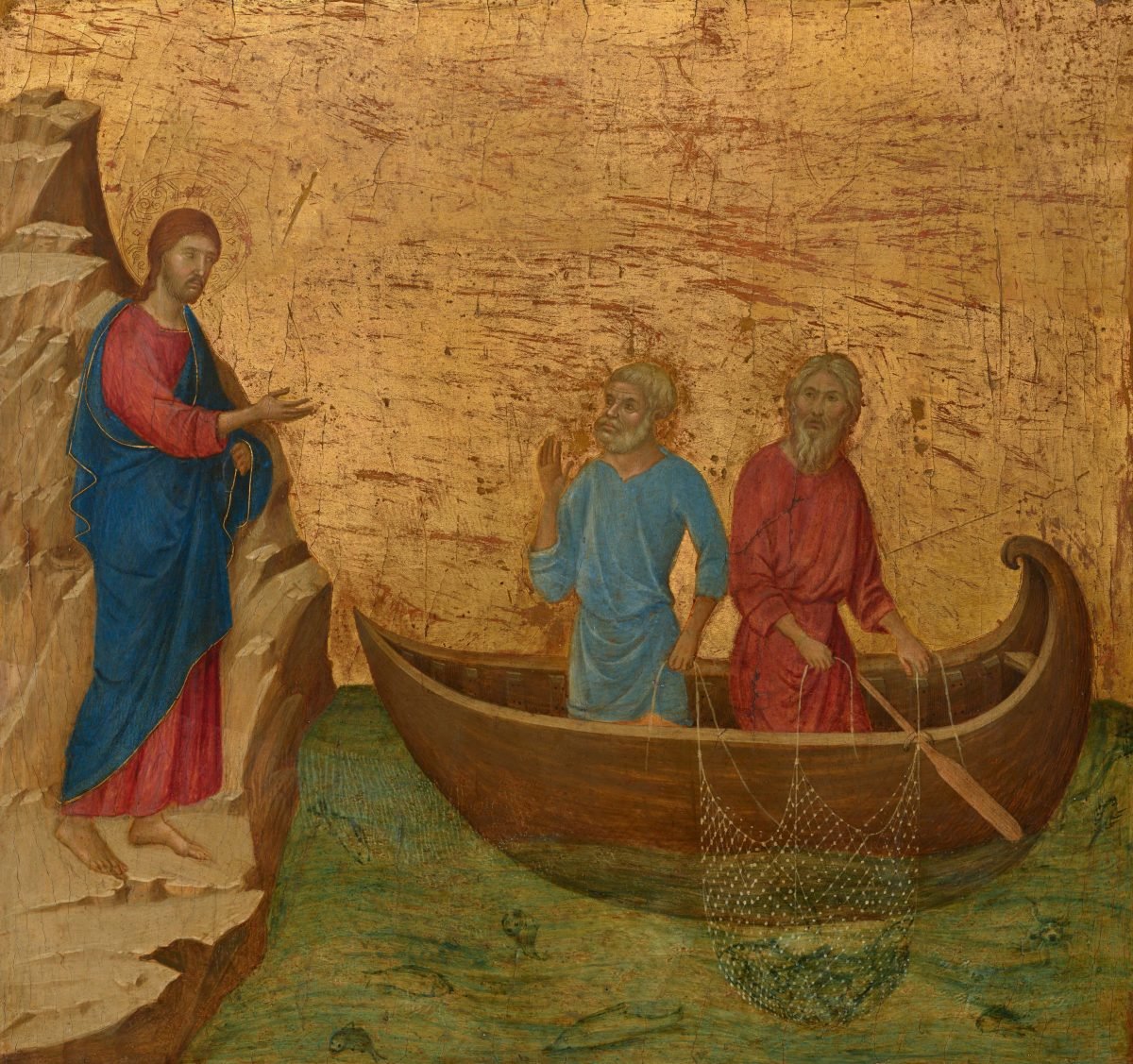Cover image: Duccio di Buoninsegna, The Calling of the Apostles Peter and Andrew, 1308-1311. National Gallery of Art, Washington D.C. (CC0)
I recently polled my Facebook friends about their burning art-related questions. I got four great questions, for which I hope I gave four good answers. Do you have an art question you want answered? Let me know in the comments!
Why do Greek and Roman gods always appear naked?
Different cultures and religions have their own ways of showing the divine. (Christian halos are a familiar example of this.) In ancient Greece and Rome, having a perfect body was seeing as the epitome of godliness. Since it’s easiest to show physical perfection on a naked figure, that’s how the gods were usually portrayed. By the way, classical gods never wore fig leaves. Those were later additions made by generations far more prudish than the Greeks and Romans.
What’s special about pre-Renaissance Christian art (particularly painting)?
Medieval artwork was all about colors, shapes, and patterns. This is best embodied by stained glass windows. Unlike the naturalism (truth to nature) of Renaissance art, medieval art aimed for surface beauty. Elaborate patterns, brilliant colors, and expensive, shiny materials like gilt and jewels were much desired. They were seen to reflect favorably on an artistic patron or recipient – often God, since much of this art was religious.
If you want to take a wider view, look at medieval paintings of several different centuries to watch the development toward the Renaissance. At that time, it fell out of favor and was often termed “primitive”, until modernist movements of the late-19th and early-20th centuries made flattened and simplified forms fashionable again.
Why are brushstrokes significant?
Brushstrokes are a bit like handwriting. You would get very a different feeling from precise, evenly-sized handwriting than you would from handwriting that’s wild and all over the place, right? The same is true of brushwork. The way the artist applied paint can give a sense of how they worked. Did they use long, flowing (“painterly”)strokes or short, choppy ones? Do they seem careful or free? Confident or neurotic? Imagine the movement that might have been required to make a particular brushstroke. What feeling or state of mind does that suggest? Brushstrokes effect the overall aesthetic of a painting, too. They can make it seem soft or hard, simple or complex, casual or formal. In extreme cases, such as the works of Vincent Van Gogh, they can actually project out enough to add a third dimension to a painting.
“I want to know more about minimalist Modern Art. I know art is supposed to invoke a feeling but when a blank canvas is hung on the wall as art, all I feel is annoyed.”
Minimalism is best understood in its historical context. In art, like in everything else, there’s a reaction for every action. After a long period of restrictive rules about what art should be, rebellion was inevitable. Artists started questioning traditional ideas about subject matter, perspective, skill, composition, meaning, and what counts as art. Monet’s Water Lilies, Duchamp’s famous urinal, and the works of Jackson Pollock were all part of this. It’s only fitting that this process would eventually produce an art movement like Minimalism. Minimalist paintings exist exclusively to be paintings, their subject matter is painting, and they perfectly represent painting. Ideologically, they’re the purest possible paintings, because there’s nothing to them but painting itself.
This can be difficult to wrap your head around, and I suspect you’re not alone in your feelings about these works. I’m not a huge fan myself. So maybe the best way to see it is as a reminder of the fact that art can now be anything we want it to be. That doesn’t mean everybody has to like it.


